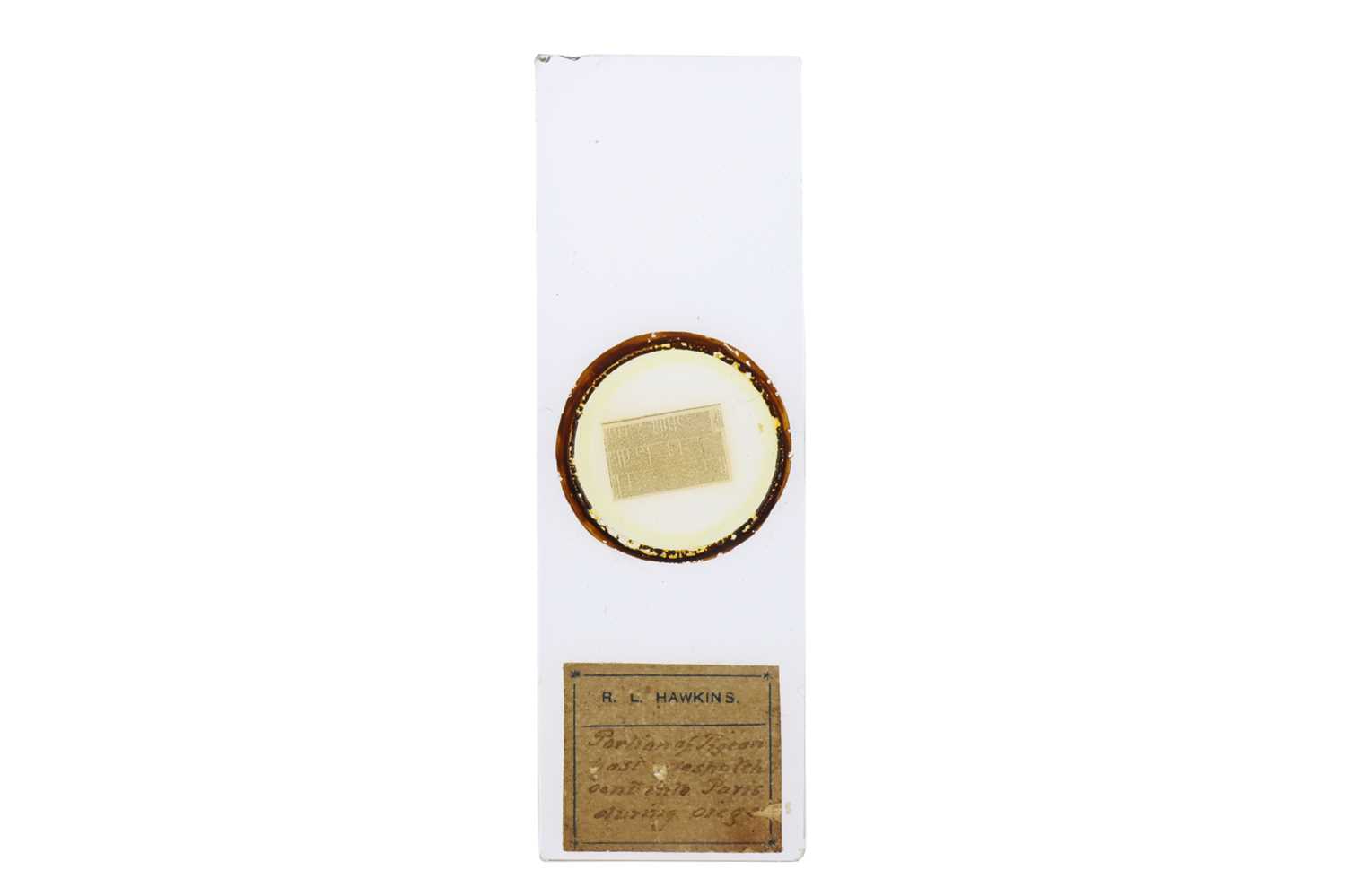24th May, 2023 12:00
Fine Instruments of Science, Medicine and Books
A Rare Original Pigeon Post Microscope Slide
The standard size microscope slide with a coverslip covering a section of microfilm, with a single paper label for H. L. HAWKINS with a handwritten nate that reads 'Portion of Pigeon post dispatch sent into Paris during seige',
The Siege of Paris (1871) occurred between 19 September 1870 – 28 January 1871, during the Franco-Prussian War. Napoleon III’s armies were pushed back after the Battle of Sedan, resulting in the Emperor’s surrender. However, the French Third Republic that was formed after his abdication were not ready for peace with Prussia. In response, the Prussians lay siege to Paris for four and half months. In order to bring the siege to a close, the Prussians fired 12,000 shells into the city within three weeks. In the end, however, it was starvation and working class resentment that brought peace to the city.
The Pigeon Post - During the siege, communication was maintained with the outside world through the use of hot-air balloons and carrier pigeons. The first successful balloon flight out of Paris was Neptune, piloted by Jules Duruof, followed two days later by Ville de Florence, piloted by Gabriel Mangin. This second balloon contained a basket of carrier pigeons, which enabled messages to start being relayed into the city and more balloons to be sent out. French photographers used innovative microphotography, pioneered by John Benjamin Dancer in 1839, to enable the transferral of large amounts of important information. This process was overseen by Blaise, who printed the messages on photographic paper, and the images were then viewed through microscopes and microscope projectors.
Sold for £1,250
Result plus buyers premium
The standard size microscope slide with a coverslip covering a section of microfilm, with a single paper label for H. L. HAWKINS with a handwritten nate that reads 'Portion of Pigeon post dispatch sent into Paris during seige',
The Siege of Paris (1871) occurred between 19 September 1870 – 28 January 1871, during the Franco-Prussian War. Napoleon III’s armies were pushed back after the Battle of Sedan, resulting in the Emperor’s surrender. However, the French Third Republic that was formed after his abdication were not ready for peace with Prussia. In response, the Prussians lay siege to Paris for four and half months. In order to bring the siege to a close, the Prussians fired 12,000 shells into the city within three weeks. In the end, however, it was starvation and working class resentment that brought peace to the city.
The Pigeon Post - During the siege, communication was maintained with the outside world through the use of hot-air balloons and carrier pigeons. The first successful balloon flight out of Paris was Neptune, piloted by Jules Duruof, followed two days later by Ville de Florence, piloted by Gabriel Mangin. This second balloon contained a basket of carrier pigeons, which enabled messages to start being relayed into the city and more balloons to be sent out. French photographers used innovative microphotography, pioneered by John Benjamin Dancer in 1839, to enable the transferral of large amounts of important information. This process was overseen by Blaise, who printed the messages on photographic paper, and the images were then viewed through microscopes and microscope projectors.
